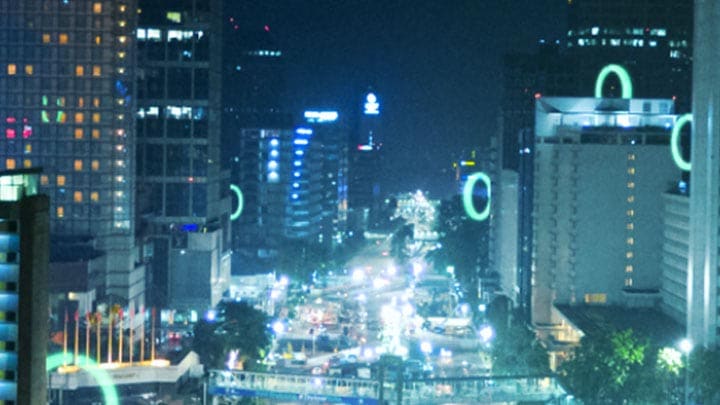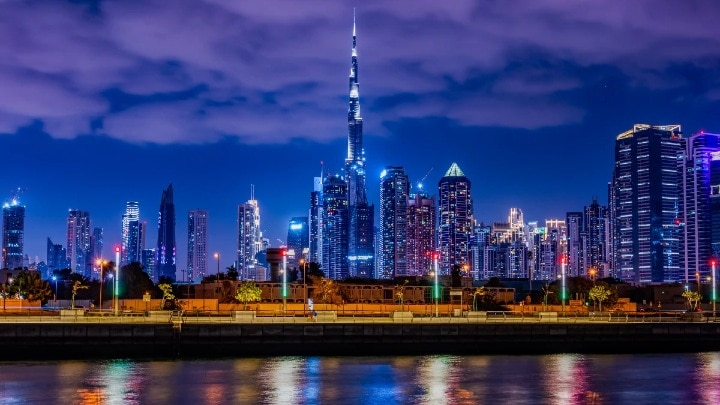February 28, 2023
The new year brings familiar problems for cities around the world. Many countries are still facing a multitude of crises: climate change continues to accelerate, economies are under pressure, and consumers are coping with inflation and skyrocketing energy bills.
But a new year also brings a renewed sense of optimism and fresh focus. Innovators are constantly discovering new ways in which IoT technology can help address the difficulties at the door and solve a number of problems both immediately and in the long term.
Here are the top 5 IoT sustainability trends to look out for in 2023:
Switching traditional lighting to LED is not a new concept, but the immense energy-saving benefits continue to be either misunderstood or overlooked. Most people are now aware that LED lighting is more energy-efficient than conventional lighting—at least 50% more efficient, in fact—but the full potential of what can be achieved remains unrealized.

For a start, connecting LEDs and managing them via a software-based lighting management system raises increases energy savings to as much as 80%. Cities account for 78% of global energy consumption, with 40% of that being lighting-related. If every city in the EU27 switched to energy-efficient connected LED, the member states would save enough energy to power 55 million electric cars every single year.
But energy savings are just one side of the coin. The scenario described above would generate cost savings of over €65 billion. Imagine how much good that money could do for families struggling to stay afloat.
These are lofty figures, and perhaps too big to fully comprehend. But even if you scale the scenarios down, the potential is too obvious to ignore.
Jonathan Weinert
IoT and connected lighting, Signify
Switching to energy-efficient LED is truly the most immediate and significant impact you can make in the fight against climate change.
City budgets are tight. Whether it’s the strain of post-pandemic regeneration or the global impact of the war in Ukraine, many economies are at the breaking point. City decision-makers may have the ambition to develop and improve their infrastructure, but without funding it’s simply not viable.
Luckily, governments are starting to take action. Slowly but surely, funding programs are being established that promise to support infrastructure projects and help cities achieve the goal of becoming sustainable while at the same time improving the health and well-being of citizens.

Take the EU Green Deal, which pledges to make trillions of Euros available for cities looking to enhance the energy efficiency of their public buildings, improve mobility, or create jobs for future generations. In the US, the 2022 Inflation Reduction Act (IRA) represents the single largest investment in climate and energy in American history, enabling America “to tackle the climate crisis and advance environmental justice.” The ASEAN Infrastructure Fund has been launched in Asia.
All of this means that as cities start to consider how they can modernize their infrastructure and explore IoT solutions to help in the fight against climate change, funding is one less barrier to overcome.
The transportation industry has set itself the target of achieving carbon neutrality by 2050. It’s an ambitious goal, and one which appears even more daunting when you consider that 72% of all transport-related greenhouse gas emissions come from cars and trucks. There are billions of vehicles on the roads, so how do you radically reduce their emissions? By going electric.
EV adoption has picked up pace in recent years, but the scarcity of charging stations around cities and towns is a serious stumbling block. Consumers value convenience, and the uptake of EVs will stall if they make it much more difficult to get from point A to point B than their gas-guzzling predecessors.
Where does IoT technology fit in? For a start, connected LED street lights can be designed to serve as vertical digital assets that cities can use to deploy connected capabilities across a municipality—from public broadband access points to EV charging points built directly into light poles. Electricity savings from both LED street lighting and smart buildings can help balance the increased electrical load, keeping costs low and avoiding the need for additional power generation.
The EU has passed legislation that prohibits the use of conventional fluorescent lighting. The ban has been a long time coming—not only are fluorescent bulbs outdated and inefficient, they contain harmful materials like phosphorus and mercury. With the ban coming into effect in early 2023, the shift to energy-efficient LED is set to accelerate even more than it has over the last two decades.
Sometimes doing the right thing is a matter of not having the choice to do the wrong thing. The Paradox of Choice theory states that rather than providing freedom, having too many options actually complicates the decision-making process and causes more stress in the long run. The EU’s banning of conventional fluorescent lighting has removed that choice from building owners and city decision makers, steering—or rather forcing—them to explore LED lighting as not just the better option, but the only option.
The anticipated surge in LED usage means increased opportunities for connected lighting and IoT solution providers, as thousands of businesses and cities look to retrofit their existing lighting.
It feels like we’ve been predicting the new era of smart cities for almost a decade, but is 2023 finally the time that IoT technology adoption in cities explodes?
Smart cities do not only focus on making life comfortable for people—they improve the social, environmental, and financial aspects of urban living. And as city populations grow, smart cities will become a key ingredient in improving sustainability and quality of life.
AIoT—the combination of AI technology with IoT infrastructure—is promising to accelerate things further. Right now, IoT infrastructure requires a level of human monitoring and management. Imagine how efficient our cities could run with AI pulling the strings. Smart city experts anticipate AIoT solutions to emerge for managing energy and other resource distribution, traffic and other public service management, waste management, and more—all in the near future.
Discover more on how switching to connected LED can benefit us all, here
Signify Global Media relations - Professional Lighting
Claire Phillips
Tel: +44 7956 489081
Email: claire.phillips@signify.com
Signify (Euronext: LIGHT) is the world leader in lighting for professionals, consumers and the Internet of Things. Our Philips products, Interact systems and data-enabled services, deliver business value and transform life in homes, buildings and public spaces. In 2023, we had sales of EUR 6.7 billion, approximately 32,000 employees and a presence in over 70 countries. We unlock the extraordinary potential of light for brighter lives and a better world. We have been in the Dow Jones Sustainability World Index since our IPO for seven consecutive years and have achieved the EcoVadis Platinum rating for four consecutive years, placing Signify in the top one percent of companies assessed. News from Signify can be found in the Newsroom, on X, LinkedIn and Instagram. Information for investors is located on the Investor Relations page.


December 17, 2024
Transforming Dubai’s iconic buildings with connected lighting from Signify